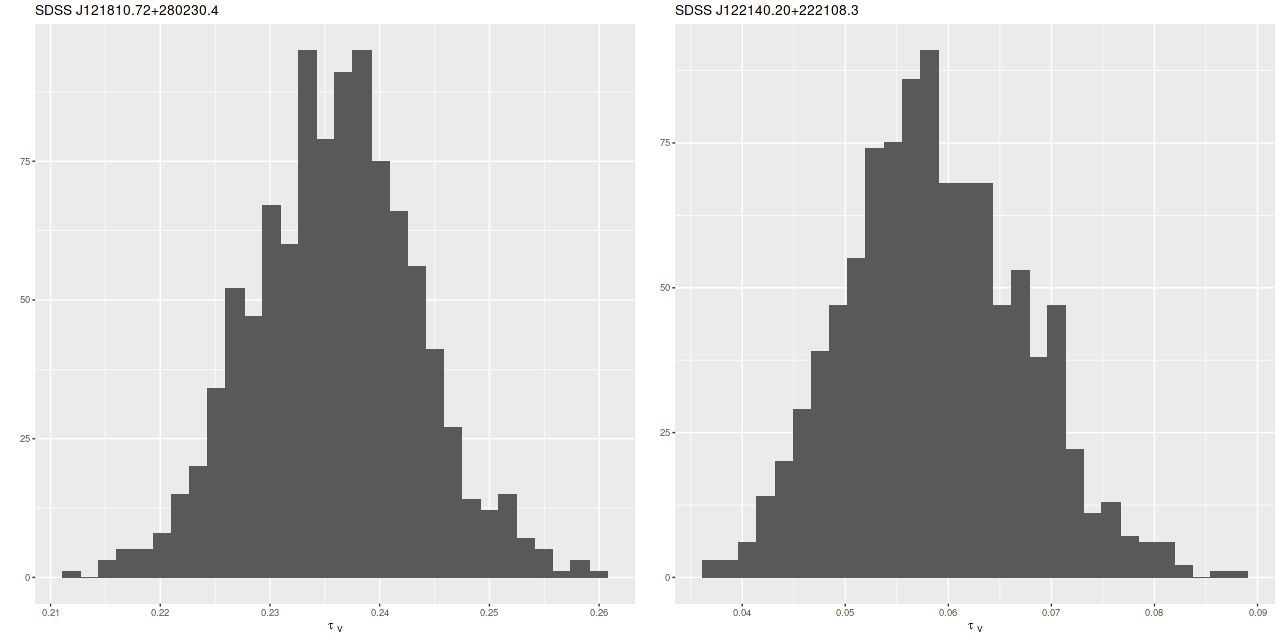This post will be short. Eventually I’d like to add a reproducible real data example or two to the documentation of the software I just officially published. Even though I’m mostly working with MaNGA data these days it may not be practical to include an example since the smallest RSS file is ∼20MB and it can take days to fully process a single data set. The single fiber SDSS spectra on the other hand are only ~170-210KB in “lite” form. While I’m hunting around for suitable examples I’ll post a few results here. For today’s post a couple of randomly selected early type galaxies from my north galactic pole sample:
These don’t seem to be in any historical catalogs, so I’ll just call them by their SDSS designations of J121810.72+280230.4 and J122140.20+222108.3, or J1218+2802 and J1221+2221 for shorthand. The first appears to me to be a garden variety elliptical; the second might be an S0 — neither has a morphological classification listed in NED (a majority of GZ classifiers in both GZ1 and GZ2 called the second an elliptical). Galaxy 2 has a redshift of z=0.023, which puts it in or near the Coma cluster. Galaxy 1 is well in the background at z=0.081.
I modeled the star formation histories with my standard tools and the “full” EMILES ssp library (that is all 54 time bins in 4 metallicity bins). The Stan models both completed without warnings (one required some adjustment of control parameters). Here are some basic results. First, star formation histories, displayed as star formation rate against lookback time. I find it can be useful to use linear or logarithmic scales on either or both axes. Here I show SFR scaled both ways:
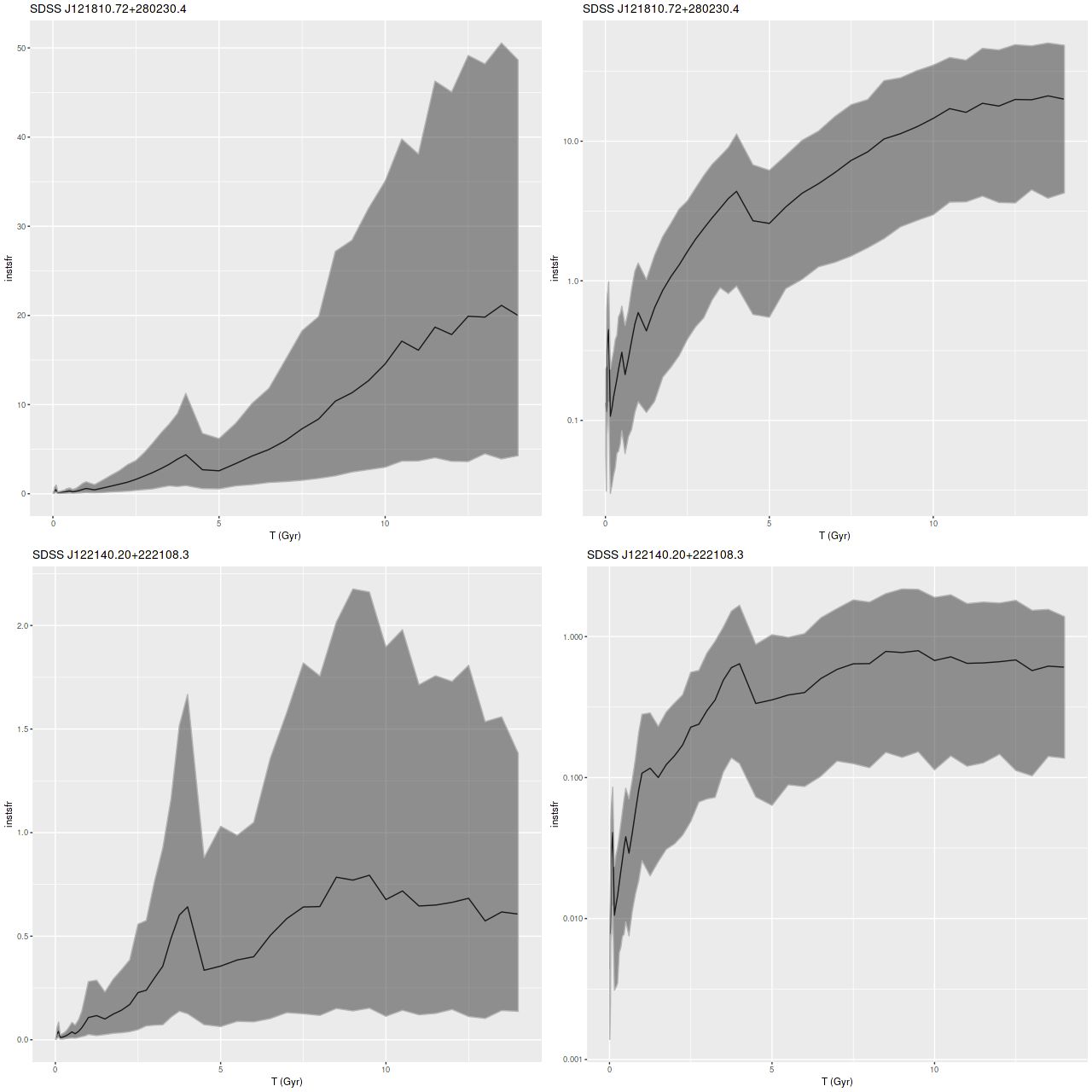
So-called non-parametric models for star formation histories are hoped for gold standards for SFH modeling, and here we see part of the reason: these have rather different estimated mass assembly histories despite similar looking spectra (see below or follow the links), and neither estimate is particularly close to commonly chosen functional forms.
There are some oddities to beware of however. For example literally 100% of the models I’ve run with any variation of the EMILES library show an uptick in mean star formation rate at 4Gyr, independent of the absolute estimated SFR. This can’t be real obviously enough, but I haven’t yet found an error or other specific reason for it. There may be other persistent zigs and zags in SFR at specific times, and these can vary with the SSP library. Overall I assign no particular significance to small variations in mean estimated star formation rates, especially at early times. I’m somewhat more inclined to take seriously late time variations (say, most recent Gyr), which may be wishful thinking.
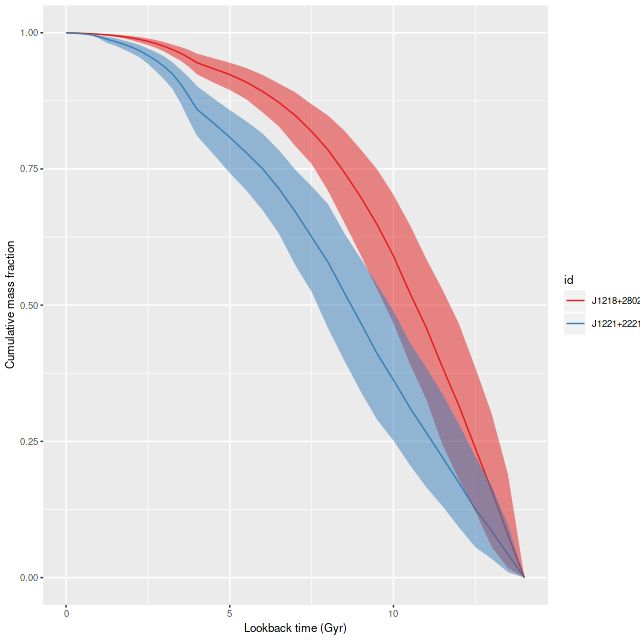
The data aren’t inconsistent with a small amount of ongoing star formation (estimates of specific star formation rate averaged over 100Myr are shown — these have units of yr-1). SSFR’s in a range ~10-11 yr-1 are about an order of magnitude lower than an ordinary starforming galaxy in the local universe.

Fits to the data are comparable, and satisfactory over most of the wavelength range of the spectra. A recent paper on arxiv (article id 1811.09799) mentioned some fitting issues with EMILES SSP libraries in the red. This can be seen here in the range ~6750-7500Å (rest frame). I don’t have an explanation either. It might be significant that the MILES stellar library spectra extend only to ~7300Å, with other data sources grafted on to the red extension, so there could be a calibration problem. On the other hand the prominent dip in this range is at least partly due to TiO absorption, so this could point to metal abundance variations not captured by EMILES.
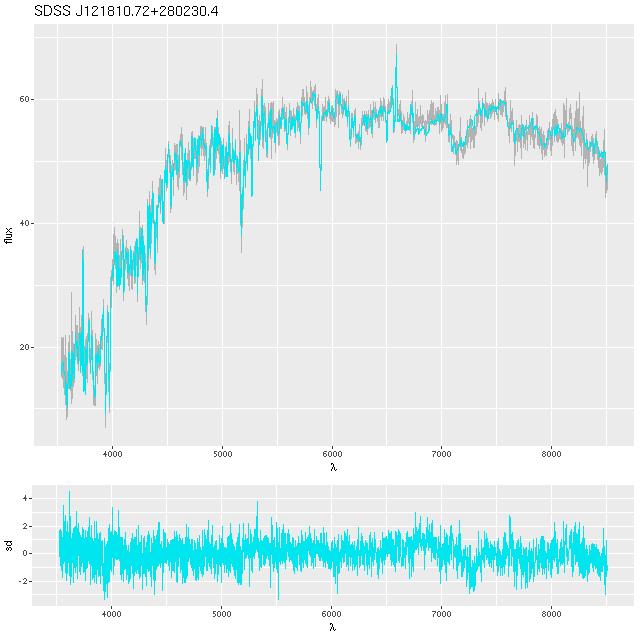
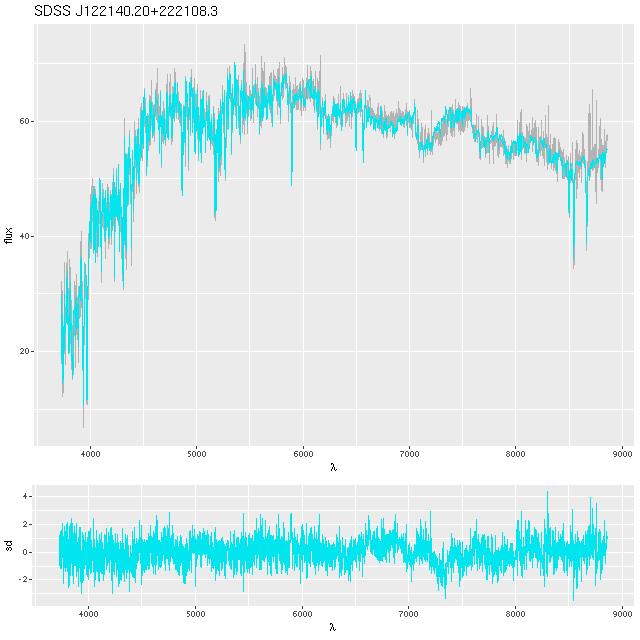
Finally, I find it useful to model attenuation, even in ETGs that are often considered dust free. I just use a Calzetti attenuation curve in these models even though it was based on starburst galaxy SEDs and therefore may not be appropriate. This is a topic for possible future model refinement.
